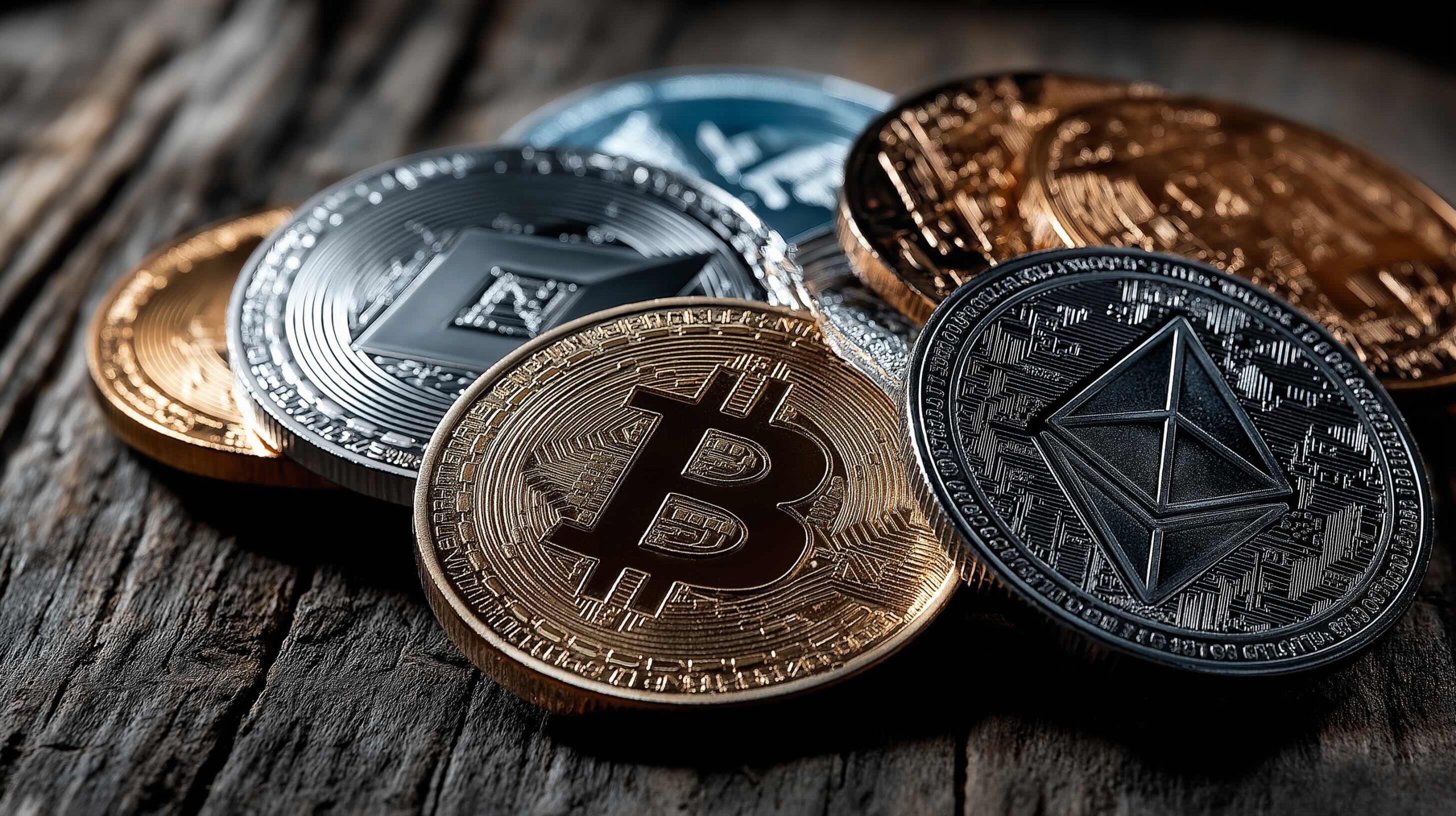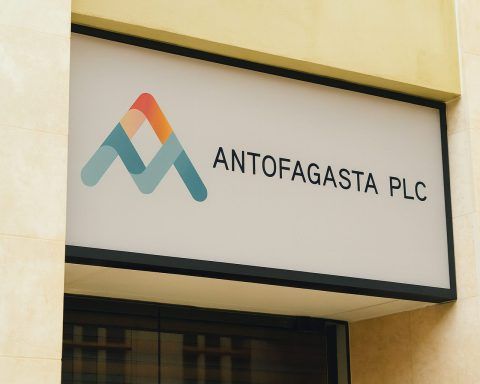- Bitcoin hit a record high of about $112,500 on May 22, 2025, traded around $106,000–$110,000 in June, and held roughly 60% of total crypto market capitalization by mid-June.
- Total crypto market capitalization surpassed $3 trillion for the first time since late 2021, peaking near $3.4 trillion in June 2025.
- Ethereum’s Pectra upgrade went live on May 7, 2025, adding 11 EIPs—including EIP-7702 for account abstraction and EIP-7691 for increased data throughput—while boosting Layer-2 capacity and staking efficiency.
- Solana’s Firedancer validator client moved to testnet/early mainnet deployment in 2025, with stress tests showing 600,000+ TPS and Solana’s TVL doubling in H1 2025.
- Bitcoin’s Lightning Network capacity rose to well over 8,000 BTC locked in channels, and Ordinals/BRC-20 activity surged in early 2025.
- Circle’s USDC issuer went public via the Blockbuster IPO on June 5, 2025, raising $1.1 billion and delivering a 168% gain on the first trading day.
- Robinhood acquired Bitstamp for $200 million on June 2, 2025, gaining licenses in more than 50 jurisdictions.
- In the US, the GENIUS Act was passed in June 2025 to license stablecoin issuers, while SEC Chair Paul Atkins proposed a ‘conditional innovation exemption’ and ‘innovation sandbox’ for on-chain products.
- MiCA fully took effect in January 2025 across the EU, enabling passporting, with Gemini and Coinbase pursuing MiCA licenses in Malta and Luxembourg.
- Hong Kong published the ASPIRe roadmap in February 2025 and passed the Stablecoin Ordinance in May 2025 (effective August 1, 2025), while Japan approved a new crypto broker-dealer licensing category in June 2025.
Crypto Prices Surge to New Highs in H1 2025
The first half of 2025 saw a robust crypto bull market, with major cryptocurrencies reaching or nearing all-time highs. Bitcoin (BTC) broke the six-figure milestone and traded around the $100K–$110K range for much of June [1] [2]. It set a record high of ~$112,500 on May 22, 2025 before settling back to about $106,000 in late June [3]. Ethereum (ETH), the second-largest crypto, climbed above $2,600 in June [4], reflecting a ~$294 billion market cap [5]. Several altcoins significantly outperformed: for example, Solana (SOL) rebounded to $145 per coin (about $77B market cap) amid renewed ecosystem activity [6], and XRP (Ripple) surged above $2.17 (over $128B market cap) – a +337% year-to-date gain following favorable developments in its long-running SEC case [7] [8]. Table 1 summarizes the price and market cap of select top crypto assets as of late June 2025:
| Cryptocurrency | Price (June 25, 2025) | Market Cap | 2025 YTD Change |
|---|---|---|---|
| Bitcoin (BTC) | ~$106,000 [9] | ~$2.11 trillion [10] | +57.8% (1-yr) [11] (est. ~+70% YTD) |
| Ethereum (ETH) | ~$2,600 [12] | ~$294 billion [13] | est. +50–60% YTD |
| Solana (SOL) | ~$145 [14] | ~$77 billion [15] | Huge rebound (multi-fold from 2024 lows) |
| XRP (Ripple) | ~$2.17 [16] | ~$128 billion [17] | +337% YTD [18] |
Table 1: Prices and market capitalizations of leading cryptocurrencies in June 2025. (YTD = year-to-date change from January 2025; bold indicates approximate figures.)
Notably, Bitcoin’s market dominance climbed to ~60% of the total crypto market by mid-June [19]. The global crypto market capitalization surpassed $3 trillion for the first time since late 2021 [20], more than doubling from the bear-market lows. In fact, total crypto market cap hit around $3.4 trillion at its peak in June [21] [22] before a mild pullback. Despite these lofty valuations, market sentiment, while optimistic, had not yet reached the euphoria of previous tops – the Crypto Fear & Greed Index hovered in the 70s (greed) in June, down from extreme highs (>90) seen at the 2024 peak [23]. This suggests investors remained “cautiously bullish,” with big targets in mind but also aware of potential risks [24].
In June, Bitcoin traded just a few percent below its record high and showed resilience even during brief market stumbles [25]. For instance, after a 10% dip in early June (from ~$110K down toward $100K), buyers swiftly stepped in to “buy the dip,” liquidating over $300M in short positions in one day [26]. Analysts described the price action as a “peaceful rally” characterized by consistent higher highs and rapid dip-buying [27]. Ethereum similarly notched its first green monthly candle of 2025 in May, jumping 40% that month and adding another ~10% in early June [28]. By late June, Ether was testing a critical ~$2.8K resistance level that, if broken, could pave the way for a move above $3,000 [29] [30].
Broader altcoin markets rallied alongside the blue-chips. Large-cap tokens in decentralized finance (DeFi) like Uniswap (UNI) and Aave (AAVE) spiked ~20% mid-June after encouraging signals from U.S. regulators (discussed later) [31]. Solana’s price more than doubled since January, supported by rising total value locked (TVL) on its network (which doubled in H1 2025 alone) and technical upgrades boosting investor confidence [32]. Even memecoins and niche sectors saw renewed speculation – a Solana-based memecoin launchpad Pump.fun announced plans to raise $1B via token sale at a $4B valuation amid the hype [33].
In summary, by June 2025 the crypto market had staged a remarkable recovery from the prior year, with Bitcoin around $107K (nearly 50% above its previous 2021 peak [34]) and total crypto capitalization back above $3T [35]. Market breadth improved as well: while Bitcoin led the rally early, mid-2025 saw capital rotating into Ethereum and select altcoins. Historically, the late stages of crypto bull markets see “alts outperform BTC and make new highs”, and indeed analysts noted that the biggest and quickest gains often occur in the final phase of a bull run [36]. Whether the market is entering that euphoric final phase or just a mid-cycle consolidation remains a point of debate as we head into H2 2025.
Macroeconomic and External Influences on Crypto
Macroeconomic trends in 2025 have been a key tailwind for crypto. In the U.S., inflation has decelerated faster than expected – the May CPI came in at just +0.1% (vs 0.3% core expected), indicating that price pressures are easing [37]. This “good inflation news” gave risk assets room to breathe. Equities grinded higher, and Bitcoin jumped on the data release, briefly pushing past $110K on hopes that the Federal Reserve might soon end its rate hikes [38]. Indeed, by June there was open talk of the Fed pivoting to rate cuts later in 2025 if inflation stays subdued [39] [40]. Federal Reserve officials are considering rate cuts, and such liquidity easing could benefit cryptocurrencies and stocks alike [41]. The backdrop of potential monetary loosening has strengthened the bullish case for Bitcoin, which many investors view as a hedge in a low real-yield environment.
Global commodity trends have further bolstered the outlook. Oil prices unexpectedly fell in Q2, relieving some inflationary pressure [42]. Lower energy costs reduce the risk of another inflation spike, supporting the case for Fed rate cuts or at least a sustained pause. In markets, the anticipation of an easier Fed has weakened the U.S. dollar from its 2022 highs, another factor historically correlated with crypto strength. A prominent crypto analyst noted that Bitcoin’s price resilience – holding largely above $100K even through geopolitical flare-ups – is itself attracting more buyers, illustrating a reflexive cycle where strength begets strength [43] [44]. In other words, as Bitcoin stayed firm despite events like Middle East tensions or U.S.–China trade spats, investor confidence grew that crypto is maturing as a macro asset class.
That said, the macro picture isn’t without risks. Geopolitical events and policy uncertainty still cause short-term volatility. For example, when U.S.–Iran tensions briefly escalated in early June (including an airstrike), Bitcoin saw a “heavy short-term dip” below $100K – but notably rebounded quickly as buyers viewed it as a buying opportunity [45] [46]. Similarly, looming trade negotiations (e.g. U.S.–China talks) and tariff policy decisions have markets on watch [47]. Crypto observers note that while Bitcoin is increasingly treated as “digital gold”, providing a safe haven during some crises, it is still a risk-sensitive asset influenced by global liquidity and risk appetite [48] [49]. Broader policy uncertainties – such as the outcome of U.S. budget debates or global regulatory coordination – “could keep bullish momentum in check,” as one market report cautioned [50].
On balance, the macroeconomic climate in mid-2025 is favorable for crypto: inflation is down, interest rates are expected to peak (with bond yields stabilizing or falling), and major economies have so far averted recession. Stocks and crypto have been moving in tandem in a risk-on trade – for instance, the S&P 500 was up modestly in June alongside Bitcoin’s rally [51]. If the Fed and other central banks start easing monetary policy in the coming months, that liquidity boost could further propel crypto markets. CoinDesk analysts highlighted this alignment of factors – policy shifts, commodity relief, and technical momentum – as underpinning forecasts for Bitcoin to potentially reach $120K later this year [52] [53].
However, investors are also mindful that tightening or shocks could return. Any sign of resurgent inflation or an abrupt change in central bank stance would likely introduce volatility. Additionally, regulatory developments (covered below) form part of the macro narrative: the increasing clarity in regulations has been a positive influence on market sentiment, whereas any adverse government action can rapidly sour the mood. In summary, crypto’s mid-2025 surge has been “waiting for its next macro cue,” with Bitcoin now “at a crossroads” poised between structural support and waning momentum depending on economic signals ahead [54]. All eyes are on the Fed and inflation readings in H2 2025 as potential catalysts for crypto’s next major move.
Major Blockchain Technology Updates and Innovations
Beyond market prices, 2025 has been a year of significant breakthroughs in blockchain technology. In the first half of the year, several long-awaited upgrades and innovations went live across major networks, aiming to improve scalability, security, and usability of crypto platforms.
Ethereum’s “Pectra” Upgrade: Ethereum underwent a major network upgrade codenamed Pectra on May 7, 2025 [55]. This upgrade – Ethereum’s most ambitious since the 2024 “Dencun” fork – combined changes to both the execution layer (“Prague” hard fork) and the consensus layer (“Electra” upgrade) [56]. Pectra implemented 11 Ethereum Improvement Proposals (EIPs), more than any previous upgrade [57], with far-reaching impacts:
- Smart Wallets & Account Abstraction: One headline feature is EIP-7702, which enables a form of account abstraction by allowing externally owned accounts (EOAs – regular wallets) to temporarily execute smart contract code during a transaction [58]. In practical terms, this lets users do things like batched transactions, meta-transactions (gas sponsored by a third party), and custom signature validation – without converting their account to a full contract. This upgrade should vastly improve user experience (no more juggling multiple transactions for a single DeFi action) and brings Ethereum “closer to full account abstraction”, making the network more flexible and user-friendly [59] [60].
- Scalability Boost (“Data Blobs”): Pectra also included EIP-7691 and related changes that increase data throughput for Layer-2 rollups [61]. Building on 2024’s proto-danksharding, the upgrade raises the amount of blob data (batched transaction data) Ethereum can handle, directly benefiting Layer-2 networks that post data to Ethereum. This reduces fees and latency for popular Layer-2 solutions and is a step toward full sharding in the future. As a result, Ethereum’s capacity to support high throughput applications (DeFi, gaming, etc.) has grown, potentially lowering transaction fees and congestion on the main chain [62].
- Staking & Validator Improvements: Another key change (EIP-7251) raised Ethereum’s max effective staking balance, allowing validators to put more than the previous limit (32 ETH) to work in securing the network [63] [64]. This can improve capital efficiency for large stakers. Additionally, EIP-6110 brings validator deposits on-chain for smoother onboarding, and tweaks like EIP-7549 and EIP-7623 refine consensus processes [65] [66]. The net effect is a more flexible and robust Proof-of-Stake network. Pectra’s changes should reduce validator downtime, lower reorg risks, and make it easier to run nodes – all bolstering Ethereum’s security and decentralization.
Overall, Ethereum’s upgrade spree has reinforced its role as the leading smart contract platform. The network’s thriving Layer-2 ecosystem also got a boost: protocols like zkSync and StarkNet have continued to expand in 2025, offering faster and cheaper transactions on top of Ethereum [67]. In fact, the Layer-2 daily transaction volume now regularly exceeds Ethereum L1’s as users migrate to rollups for routine activity. The Ethereum Foundation has committed over $30M in new grants this year to improve Layer-2 efficiency and development tools [68]. With record-high Ethereum staking (over 28% of ETH supply staked) [69] and even Ethereum futures ETFs attracting interest (BlackRock’s new ETH ETF garnered $4B+ in inflows by June [70] [71]), the technical and economic state of Ethereum is strong heading into H2.
Solana’s Performance Upgrades: Outside of Ethereum, other blockchain projects have executed notable innovations. Solana, known for its high throughput, is addressing past reliability issues by overhauling its core software. In 2025, Jump Crypto’s “Firedancer” – an independent Solana validator client – moved into testnet and early deployment, showing impressive results. Firedancer, built in C++ from scratch, aims to massively increase Solana’s throughput and stability. In stress tests, Firedancer achieved 600,000+ transactions per second (TPS), far above Solana’s current ~3,000 TPS in production [72] [73]. By mid-2025, Firedancer had begun delegating stake (8–9% of total) to community validators to bootstrap its adoption [74]. Developers expect Firedancer to go live on mainnet by late 2025, a change that could make Solana one of the fastest and most resilient chains in the industry. This is significant given Solana’s challenges in 2022–23; the network experienced outages and lost favor after a major exchange collapse. Now, Solana’s comeback is in full swing, with its TVL doubling in H1 2025 [75] and new infrastructure like Firedancer instilling confidence that Solana can scale without sacrificing uptime.
Bitcoin Layer-2 and Ordinals: On the Bitcoin network, innovation has been more incremental but notable. The Bitcoin Lightning Network – BTC’s primary Layer-2 for fast payments – continued to grow, with capacity reaching new highs (estimated well above 8,000 BTC locked in channels globally). Lightning is seeing increasing adoption for remittances and micro-transactions as firms like Block (formerly Square) and Strike expand Lightning-powered services. Bitcoin’s base layer also experienced a surge of new use cases via the Ordinals protocol, which enables NFTs and fungible tokens on Bitcoin (through “inscriptions” on satoshis). The BRC-20 token standard (emerging in 2023) led to bursts of activity and congestion on Bitcoin early in 2025, as memecoins on Bitcoin became briefly popular. This sparked a debate on Bitcoin’s purpose and block space usage. By June, the frenzy had subsided, but developers are exploring solutions (like scaling Bitcoin’s mempool or dual-layer architectures) to accommodate diverse uses without compromising Bitcoin’s core functionality.
Other Protocol Innovations: Several other blockchain projects introduced new consensus mechanisms and performance upgrades in 2025:
- Cardano implemented its promised improvements from the 2024 Hydra and Input Endorsers research, aiming to increase throughput via off-chain staking pools and parallel processing.
- Polkadot rolled out asynchronous backing for its parachains, improving block times and throughput across its ecosystem.
- Cosmos/Tendermint chains are experimenting with optimistic consensus and interchain security to allow smaller chains to piggyback on the security of hub chains.
- A novel proposal called “Beam Chain” was floated in Ethereum research circles, outlining a potential overhaul of Ethereum’s consensus to integrate succinct proofs – though this is early-stage, it signals the continuous R&D into next-generation blockchain designs [76].
- Zero-knowledge proofs saw wider deployment beyond Ethereum L2: projects like Mina Protocol and Aztec pushed ahead with privacy-focused zkApps, and even traditional institutions started piloting zk-proofs for confidential transactions (e.g. Swift’s blockchain trials for asset transfers with privacy).
In summary, the technological foundation of the crypto industry grew stronger in 2025. Ethereum’s upgrades are tackling the blockchain trilemma by increasing scalability without major sacrifices to decentralization or security [77] [78], and other chains are similarly advancing. Interoperability is also improving – cross-chain bridges and messaging protocols (like Polkadot’s XCM and Cosmos IBC) are maturing, allowing assets and data to flow between chains more seamlessly than before. All these innovations play a critical role in supporting the next wave of adoption: as more users and institutions come on-chain, the infrastructure is being readied to handle higher volumes and more sophisticated applications (from DeFi and gaming to real-world asset tokenization).
Notable Partnerships, Acquisitions, and Funding Trends
Institutional and corporate activity in crypto hit a fever pitch in June 2025, with major partnerships, acquisitions, and funding rounds signaling a deepening integration of crypto into traditional finance. A series of high-profile deals underscored the theme of “Wall Street meets Crypto”:
- Circle’s Blockbuster IPO: Stablecoin issuer Circle (creator of USDC) went public on the NYSE on June 5, 2025, marking one of the most successful crypto IPOs to date [79]. The company raised $1.1 billion in its debut (34 million shares at $31 each) and saw its stock soar 168% on the first trading day [80]. Within two weeks, Circle’s stock price had jumped 800% to over $270 [81], giving it a market cap eclipsing even the ~$60B circulating value of USDC [82]. This eye-popping demand (the IPO was oversubscribed ~25×) highlights mainstream investors’ appetite for exposure to crypto infrastructure companies. Circle’s successful listing – coming after a previously aborted SPAC attempt – validates the public markets’ interest in the crypto sector and paves the way for others.
- Exchange M&A – Robinhood & Bitstamp: In an East-meets-West exchange deal, retail brokerage Robinhood acquired Bitstamp, one of Europe’s longest-running crypto exchanges, for $200 million on June 2 [83]. This strategic acquisition instantly gives Robinhood licenses in 50+ jurisdictions (via Bitstamp’s regulatory approvals) and a base of millions of international crypto users [84]. Robinhood is positioning to offer crypto trading to both retail and institutional clients globally, leveraging Bitstamp’s infrastructure and compliance footprint. The move also reflects consolidation in the exchange space – larger players are scooping up established exchanges to expand their reach and user base. Around the same time, Gemini (the Winklevoss-owned exchange) confidentially filed for a U.S. IPO (targeting late 2025 or early 2026) [85], and Kraken raised $27M in a pre-IPO funding round at a valuation up to $4B as it eyes a potential 2026 listing [86]. Even Bullish, a exchange backed by Peter Thiel, resurfaced plans to go public [87]. All told, 2025 is living up to predictions of a “Year of the Crypto IPO,” with multiple crypto unicorns heading for public markets [88].
- Fintech-Blockchain Integrations: Payment giants are embracing stablecoins and blockchain tech via partnerships. In June, Fiserv – a Fortune 500 payment processor – launched its own stablecoin FIUSD on the Solana blockchain [89]. FIUSD is integrated into Fiserv’s banking/payments network and even partnered with PayPal for interoperability [90], marking one of the first instances of major payment companies directly issuing a crypto asset. Around the same time, Societe Generale, one of France’s largest banks, announced plans to issue a dollar-pegged stablecoin through its digital assets arm – making it the first major bank to create a USD stablecoin for public trading [91]. These moves anticipate regulatory approval of stablecoins in key jurisdictions (with new laws in both the US and EU on the horizon) and show traditional finance firms trying to get ahead of the curve by launching their own compliant crypto tokens. Additionally, Stripe (the Silicon Valley payments company) made a crypto play by acquiring wallet provider Privy to help integrate crypto and Web3 functionality into its products [92]. Stripe’s acquisition underscores that fintechs see blockchain as core to the future of payments and identity.
- TradFi–Crypto Convergence Deals: The convergence of traditional finance and crypto was a defining theme. As an analyst noted, these deals are “not isolated moves, they’re the latest in a multi-year trend” of institutional embrace of crypto [93]. For example, Circle’s NYSE listing was a “clear sign of institutional appetite for compliant, crypto-native infrastructure” [94]. Meanwhile, Stripe’s foray into wallets and Robinhood’s global crypto push show Web2 and fintech firms integrating crypto to stay competitive [95]. Such activity reflects growing regulatory clarity and recognition of crypto’s role in the future of finance [96]. Another illustrative deal was Nasdaq’s June acquisition of a crypto custody startup (notably anchoring its own crypto custody service launch) – bolstering the trend of major stock exchanges and banks entering the crypto custodial and trading space.
BlackRock’s iShares Bitcoin ETF (IBIT) has been a runaway success, amassing ~$75 billion AUM within 18 months of launch and signaling surging institutional demand for crypto [97] [98]. The rise of regulated Bitcoin ETFs is bridging traditional capital markets and the crypto world.
- Venture Capital and Funding Rounds: After a quieter 2022–23, venture funding in crypto has roared back in 2025. June alone saw 23 projects raise $190M+ in one week [99], and according to one tally, the month’s total funding reached $4.49 billion across 100+ deals – a 48% jump from May [100]. Several startups achieved unicorn status with nine-figure raises. For instance, Polymarket, a decentralized prediction market, closed a $200M funding round at a $1B valuation [101]. Its competitor Kalshi, a U.S.-regulated events futures exchange, raised $185M (Series C) at a $2B valuation [102]. DeFi and trading platforms are also attracting big money: Gradient, EigenLabs, and others focusing on liquidity and staking each raised tens of millions. Even novel concepts like crypto-powered betting (BetDEX) and AI-driven Web3 projects found significant investor interest, reflecting a broadening of use-case investment beyond just trading apps.
- Crypto Reserve SPAC: In a crossover of crypto and Wall Street, a former Blackstone executive teamed up with Tether’s co-founder to launch a $1 billion SPAC (Special Purpose Acquisition Company) aimed at creating a “crypto reserve” vehicle [103]. This listed entity, once merged, would hold a portfolio of cryptocurrencies like BTC, ETH, and SOL as reserves. The effort, underway in June, highlights creative new investment products blending public markets with direct crypto exposure. It’s effectively an attempt to list a diversified crypto holding company through a SPAC – demonstrating the ongoing financialization of crypto assets.
- Corporate Treasury and Institutional Flows: Institutions continued to accumulate Bitcoin and crypto as a treasury asset. In June, publicly traded companies collectively bought over 18,000 BTC for their balance sheets [104]. MicroStrategy, already the largest corporate BTC holder, added another 10,345 BTC (~$1.1B worth) during the month [105]. A Japanese investment firm, Metaplanet, snapped up 4,545 BTC ($485M at $106K avg price) to reach its goal of 10,000 BTC holdings ahead of schedule [106]. Even celebrity investors like Anthony Pompliano joined the fray via vehicles like ProCap BTC LLC, which bought 3,724 BTC ($387M) in June [107]. These accumulations show strong institutional conviction in crypto’s long-term value, with public companies now owning tens of thousands of BTC. Moreover, regulated crypto investment funds saw sustained inflows: Bitcoin ETF products in the U.S. had an eight-day streak of inflows totaling $2.4B in mid-June [108]. BlackRock’s iShares Bitcoin ETF (IBIT) – launched in late 2023 after the SEC’s landmark approval of spot Bitcoin ETFs – has become the fastest-growing ETF ever, reaching ~$75B AUM in 18 months and generating $186M in annual fees (surpassing even BlackRock’s S&P 500 ETF by revenue) [109] [110]. By June, U.S. Bitcoin ETFs collectively held ~$125B in assets [111]. This wave of institutional money not only provides a price-insensitive base of buyers (smoothing volatility), but also is reshaping market dynamics – Bitcoin’s volatility has dropped to near parity with equities as long-term ETF holders dampen wild swings [112]. The success of IBIT and its peers is “reshaping the ETF and crypto landscapes alike,” heralding a new era where bitcoin is a core component of mainstream portfolios [113].
Overall, the flurry of partnerships, M&A, and funding in mid-2025 paints a picture of accelerating institutionalization of crypto. As one industry report put it, “the past week marked a turning point in the convergence of traditional finance and the crypto industry”, with major deals underscoring the melding of old and new finance [114] [115]. Crypto startups are tapping public markets and large private checks, legacy institutions are launching or acquiring crypto products, and even banks are directly issuing digital assets. This rapid integration trend is expected to continue through 2025, as both crypto-native firms and traditional financial giants collaborate to build the next generation of financial infrastructure.
Government and Regulatory Developments (US, EU, Asia & More)
Regulatory clarity (or lack thereof) continues to be a critical factor for the crypto industry. In the first half of 2025, governments around the world made significant moves to establish rules for digital assets, with generally positive implications for the market. Below we break down the key developments by region:
- United States: After years of uncertainty, the U.S. is finally seeing concrete crypto legislation and more accommodating oversight. In June, the Senate passed the GENIUS Act, a landmark bill that would create the first federal licensing framework for stablecoin issuers [116]. The Act (which must still be reconciled with the House’s version, the STABLE Act) would mandate prudential standards and oversight for stablecoin providers, effectively giving legal recognition to fiat-pegged cryptocurrencies if signed into law. This comes as stablecoin usage soars and policymakers seek to guard against risks without stifling innovation. Meanwhile, the regulatory stance of key agencies has softened under new leadership. A crypto-friendly shift in Washington followed the 2024 elections – notably, a new SEC Chair, Paul Atkins, took office and has adopted a more innovation-forward approach [117] [118]. On June 9, SEC Chair Atkins announced plans for a “conditional innovation exemption” – essentially directing SEC staff to explore exemptive relief for DeFi and crypto projects that operate in good faith but don’t fit neatly into existing rules [119]. He suggested an “innovation sandbox” that would allow on-chain products and services to go to market under certain conditions, rather than forcing everything through enforcement. Atkins also highlighted the importance of self-custody and peer-to-peer transactions, echoing Commissioner Hester Peirce’s view that DeFi embodies core American values of financial freedom [120]. This is a stark contrast to the SEC’s enforcement-heavy stance in prior years. In fact, just before this, on May 29 the SEC’s Corporation Finance division issued a statement clarifying that protocol-level staking on proof-of-stake networks does not constitute a securities offering [121]. This was a huge relief for networks like Ethereum, as it signaled that simply participating in validating a PoS blockchain (and earning rewards) is not akin to dealing securities in the SEC’s eyes. Together, these signals indicate a major regulatory thaw in the U.S.: regulators are moving from punishment toward guidance and accommodation. Other U.S. agencies have followed suit: the Department of Labor (DOL)rescinded its 2022 guidance that discouraged including crypto in 401(k) retirement plans [122], reverting to a neutral stance that leaves the decision to fiduciaries (the prior guidance had been a barrier for any employer wanting to offer Bitcoin in retirement portfolios). Additionally, the IRS extended the compliance deadline for new crypto tax reporting rules – brokers won’t have to start issuing 1099-DA forms for crypto transactions until 2027 now [123] [124], giving exchanges and taxpayers more time to adapt to forthcoming regulations. Enforcement has not disappeared – state regulators and the DOJ continue to pursue scams (e.g., Alabama’s Securities Commission seized funds from a crypto scam in June) [125] and insider trading cases – but there’s a sense that legitimate actors are finally getting frameworks to operate in. Crucially, the SEC’s approvals of multiple spot Bitcoin ETFs in late 2024 (under pressure from courts and a more receptive Commission) have opened the floodgates to institutional participation [126] [127]. By mid-2025, a dozen Bitcoin and Ether ETFs are trading, and this SEC under Atkins appears amenable to further products (like pending XRP spot ETF filings awaiting a decision [128]). The combination of legislative progress (the stablecoin bill, draft proposals on exchange and custody regulation) and a friendlier SEC has markedly improved the U.S. regulatory climate compared to the crackdowns of 2022–23. Industry advocates are optimistic the U.S. will pass comprehensive crypto legislation by year-end – covering stablecoins and possibly market structure – which could solidify the country’s stance and provide much-needed clarity for entrepreneurs and investors.
- European Union: Europe entered 2025 with a comprehensive regulatory framework (MiCA) already in place, making it arguably the most crypto-friendly major jurisdiction. The EU’s Markets in Crypto-Assets (MiCA) regulation fully came into effect in January 2025 [129], establishing unified rules for crypto asset issuers and service providers across all 27 member states. Under MiCA, companies can obtain a single license (in one EU country) that passport authorizes them to operate throughout the bloc [130]. This has kicked off a race among crypto firms to become MiCA-compliant and secure an EU foothold. In June, two of the world’s largest crypto companies – Gemini and Coinbase – were reported to be on the verge of obtaining MiCA licenses [131] [132]. Gemini is set to receive its license from Malta (which has moved quickly under MiCA), and Coinbase is poised for approval by Luxembourg’s regulator [133] [134]. These licenses would grant them pan-European access. However, the rapid approvals by smaller states like Malta have caused some friction: France’s AMF has warned of a potential “race to the bottom” in regulatory standards if some jurisdictions rubber-stamp licenses too fast [135]. ESMA (the EU-wide market authority) has been reviewing Malta’s licensing spree, amid concerns that uneven enforcement could undermine MiCA’s intent [136] [137]. Despite these debates, it’s clear that MiCA has attracted major crypto business to Europe – in contrast to the U.S., where some firms felt compelled to pause or exit in 2023’s hostile climate. By mid-2025, Europe stands as a highly attractive market with clear rules: exchanges are expanding there, and even U.S.-based entities are choosing EU licensing (e.g. Ripple registering in Ireland in 2024) to future-proof their operations. Additionally, Europe has addressed areas beyond MiCA: for example, France passed a law (DDADUE, May 2025) explicitly allowing crypto assets to be used as collateral and creating a legal regime for pledging digital assets [138] [139]. This fills an important gap by facilitating crypto-backed lending under French law, and aligns with broader EU efforts to integrate crypto into traditional finance. The UK, no longer in the EU but an important market, likewise pushed forward: the Financial Conduct Authority (FCA) released consultation papers in May proposing new stablecoin issuance rules and a prudential framework for crypto firms [140]. The UK is crafting its own version of MiCA-like rules, aiming to strike a balance between innovation and oversight to become a “global cryptoasset technology hub,” as HM Treasury has stated. In summary, Europe’s regulatory environment in 2025 is relatively mature and welcoming – MiCA’s rollout is smoothing out the patchwork of national laws, and regulators are actively supervising the transition (e.g., reviewing how member states issue licenses). As one Reuters report put it, Europe’s approach brings crypto “under the same regulatory umbrella as traditional finance” [141], which could mitigate risks of fraud and market instability [142] while giving crypto companies the passporting rights and legitimacy they craved.
- Asia-Pacific: The APAC region features a mosaic of regulatory approaches, but several leading Asian markets have made significant progress in H1 2025 toward clearer crypto regulation [143]. Hong Kong has pivoted to an aggressively pro-crypto stance as part of its bid to be a global crypto hub. In February 2025, Hong Kong’s Securities and Futures Commission (SFC) published the “ASPIRe” roadmap (Agenda for Sustainable Platform Innovation & Resolution) outlining a comprehensive strategy for crypto oversight [144]. This 5-point plan includes new licensing regimes for crypto trading platforms, custodians, and even OTC dealers; technology-neutral standards for custody (focusing on security regardless of tech); expanded permissions for products like crypto derivatives for professional investors; investments in regtech for on-chain monitoring; and investor education programs to accompany market growth [145] [146]. Hong Kong’s clear intent is to deepen and broaden its crypto markets under a regulated framework, distinguishing its approach from mainland China’s ban. Further, in May 2025 Hong Kong’s legislature passed a Stablecoin Ordinance, slated to take effect August 1, 2025, which will require any issuer of stablecoins pegged to fiat or other assets to be licensed by the HKMA (Hong Kong Monetary Authority) [147]. The law sets minimum capital requirements, redemption standards, and governance rules for stablecoin issuers, and initially focuses on fiat-pegged stablecoins (like HKD or USD-backed) [148]. This positions Hong Kong as one of the first jurisdictions with a dedicated stablecoin regulatory regime – a move likely to attract major stablecoin companies to set up in HK (indeed, Circle and others have expressed interest). South Korea has also accelerated its crypto regulatory efforts. A new administration in 2025 placed crypto at the forefront of its innovation agenda [149]. In June, the government introduced a draft of the Digital Asset Basic Act, a comprehensive bill to expand Korea’s existing crypto regulations [150] [151]. Notably, this Basic Act aims to legalize spot Bitcoin ETFs (currently not allowed under older securities laws) [152], establish rules for stablecoin issuers (including potentially a won-pegged “KW stablecoin” to bolster domestic control) [153], and reform banking partnership rules so that more banks can work with crypto exchanges (breaking the monopoly of a few bank-exchange ties) [154]. South Korea already implemented the Virtual Asset User Protection Act in 2024, which focused on anti-money laundering and customer protection; the new Basic Act will go further to integrate crypto into the financial system with proper guardrails. South Korea’s regulators (FSC and others) remain proactive – e.g., enforcing strict travel rule compliance – but the tone is constructive, not prohibitive. Japan, a longtime leader in crypto regulation, made targeted updates to foster growth. In June, Japan’s Diet (parliament) approved amendments proposed by the Financial Services Agency to create a new licensing category for crypto broker-dealers [155]. Previously, any entity dealing in crypto needed a full exchange license; now, limited broker licenses allow firms to operate as intermediaries (facilitating trades) without running an order-book exchange, lowering the barrier to entry [156]. This change is expected to bring in new startups and foreign players who found the old regime too burdensome. Japan also fine-tuned its stablecoin regulations – having legalized stablecoins issued by banks and trust companies in 2022, in 2025 the FSA relaxed reserve asset rules to allow up to 50% of reserves to be held in low-risk bonds (vs 100% cash previously) [157]. This gives stablecoin issuers more flexibility and could improve yields, making issuance more attractive while still protecting holders (via the trust structure that segregates reserves) [158] [159]. Singapore, which had already enacted a forward-looking framework for single-currency stablecoins in 2023, continued on its course, maintaining clear licensing under the Payment Services Act and high standards for reserve backing and disclosure [160]. The MAS (Monetary Authority of Singapore) signaled intent to revise guidelines as needed to keep pace, but Singapore’s environment remains one of the most welcoming, especially for DeFi and fintech innovation (with licensed entities like DBS Bank issuing tokenized bonds and exploring DeFi liquidity pools under regulatory sandboxes). In contrast, China remains officially closed to cryptocurrency trading – a ban on exchanges and mining has been in effect since 2021 – though it vigorously pursues development of its central bank digital currency (e-CNY). Interestingly, some speculate that Hong Kong’s crypto opening provides an experimental conduit for Chinese capital to access crypto under the guise of Hong Kong’s rules, but mainland authorities have not openly endorsed this. India, on the other hand, continues to take a hard line fiscally – the steep 30% tax on crypto gains and 1% TDS on trades implemented in 2022 are still in place, which has severely dampened domestic trading volumes (driving activity offshore) [161]. However, India has not banned crypto, and there are signs of policy re-think especially if global standards emerge (India’s government indicated it would wait for a global consensus via the G20 before formalizing its stance further).
- Middle East & Other Regions: In the Middle East, the UAE (particularly Dubai) has solidified its status as a crypto-friendly jurisdiction. Dubai’s Virtual Assets Regulatory Authority (VARA) has been actively licensing firms under its 2022 framework. In a notable development, Dubai approved Ripple to launch a stablecoin (RLUSD) tied to the US Dollar on a trial basis [162] – showcasing the emirate’s openness to new products (Ripple’s RLUSD is among the first bank-issued stablecoins aimed at cross-border settlement). The Gulf region in general has embraced blockchain for both crypto and non-crypto uses (e.g., Bahrain and UAE working on blockchain-based trade finance and digital ID). In Latin America, countries like Brazil have implemented new laws (Brazil’s crypto framework law took effect in 2024, bringing exchanges under central bank supervision), and Argentina and others are exploring CBDCs amid currency challenges. El Salvador remains unique with Bitcoin as legal tender, and it opened a “Bitcoin embassy” in Texas in 2025 to foster cooperation. Africa presents a mixed bag: Nigeria’s eNaira CBDC struggles while crypto adoption at the grassroots remains high; Kenya and South Africa are developing regulations (South Africa treats crypto as a financial product now, requiring licensing of exchanges in 2024). Overall, globally there is momentum toward clearer rules: the Financial Stability Board (FSB) and G20 have issued guidelines urging countries to regulate crypto markets, not ban them, and to synchronize where possible. International coordination is slow but ongoing – for instance, finance ministers of G7 have reiterated support for consistent crypto tax reporting standards and anti-money laundering measures across jurisdictions.
In summary, the regulatory winds in 2025 are blowing in a more favorable direction for crypto. The contrast with prior years is stark: the emphasis has shifted from “crackdown” to “framework”. Jurisdictions that were hostile or ambiguous are coming around to creating guidelines that legitimize crypto activity (as seen in the U.S. and Asia), while those that were ahead (EU, Singapore) are reaping the benefits of attracting talent and capital. This is not to say challenges are gone – implementation of new laws will be key, and enforcement against bad actors remains robust. But the overall trend globally is toward integration of crypto into existing legal and financial systems. By laying down rules on licensing, stablecoin reserves, exchange operations, custody, and even DeFi, regulators are bringing crypto into the fold. As the *CEO of Coinbase noted, 2025 might be remembered as the year the “regulatory frost” thawed, ushering in a spring of crypto innovation under clearer skies. The impact on the market is tangible: regulatory clarity is cited by institutions as a main reason for increasing allocation to crypto, and many experts believe that sensible regulation will ultimately expand the crypto market by an order of magnitude by attracting the next wave of participants who were waiting on the sidelines.
H2 2025 Forecast: Trends and Expert Outlook
Looking ahead to the second half of 2025, analysts and industry veterans are broadly optimistic but also caution that the market’s next phase could be volatile. Several key themes and predictions have emerged for the remainder of the year:
- Bull Market Continuation vs. Cycle Peak: Many experts believe the crypto bull run has further to go before reaching a cycle top. A number of market analysts have repeatedly pointed to $120,000 as a reasonable price target for Bitcoin in 2025 [163], given the current momentum and improving macro conditions. Factors boosting this case include Bitcoin’s demonstrated resilience above $100K, the prospect of Fed rate cuts in coming months, and bullish technical patterns (e.g. major moving averages aligning in “golden cross” formations) [164] [165]. Some bulls, like those at Bitwise Asset Management, foresee an even higher year-end target around $150K–$200K for BTC, noting that Bitcoin, Ethereum, and Solana are all likely to “hit new all-time highs” again in this cycle [166]. Bitwise’s team dubbed 2025 the “Golden Age of Crypto” and predicted Bitcoin could trade above $200K with Ethereum also reaching fresh peaks (prior ATH for ETH was ~$4.9K) [167]. On the other hand, there are signs that the market may be entering its late-cycle “overheated” phase. Technical indicators like the RSI (relative strength index) on high time frames have entered overbought territory for BTC, which “could imply the final phase of the bull run” [168]. Historically, the last leg of a crypto bull market is when parabolic gains and altcoin “mania” occur – indeed, as one analyst insight noted, “the biggest and quickest gains happen during the last phase of a bull run,” and during this phase, alts tend to outperform BTC [169]. This seems to be playing out in mid-2025: we’ve seen some explosive moves in smaller caps and a resurgence of meme speculation. It suggests caution that while upside remains, the easy gains might be behind us and volatility could intensify if and when the market overheats. Several traders are watching for a potential “blow-off top” in late 2025, after which a more severe correction could ensue (similar to early 2018). For now, market sentiment is bullish but tempered – the Fear & Greed Index in June was ~71 (Greed) which indicates optimism yet not full-blown euphoria [170]. This leaves room for a final FOMO-driven surge before sentiment overheats.
- Macroeconomic Wildcards: The macro backdrop will heavily influence crypto’s direction in H2. The base case many experts foresee is a gentle economic landing with falling inflation and the start of central bank easing. If the U.S. Fed indeed cuts rates by Q4 2025 (some forecasts call for at least one 25 bps cut by December, contingent on CPI staying low), that liquidity infusion could drive both stocks and crypto higher, extending the bull run [171]. Lower interest rates typically improve the appeal of risk assets and decrease the opportunity cost of holding non-yielding assets like gold or Bitcoin. Additionally, continued declines in inflation or energy prices would be positive for the narrative of Bitcoin as a store of value (inflation hedge) with actual year-over-year CPI turning neutral or disinflationary. On the flip side, macro risks include the chance of recession (if high rates from earlier hikes finally slow the economy too much) or a flare-up in inflation due to some supply shock. A recession in major economies could initially hurt crypto as investors de-risk, though some argue Bitcoin might eventually perform well if central banks respond with aggressive stimulus. Geopolitical tensions remain a wildcard – any major conflict or unexpected event (e.g., a credit crisis, geopolitical standoff) could cause a flight to safety that might temporarily hit crypto prices. So far in 2025, Bitcoin has weathered geopolitical events relatively well (even being stable during an Iran–Israel scare as noted [172]), but it’s unclear if that resilience will hold in a more severe crisis. Regulatory decisions are another wild card for H2: for instance, the U.S. stablecoin bill outcome, or any progress on an ETF for Ethereum or other assets, could sway markets. Conversely, if regulators were to come out with surprise restrictions (say, new tax rules or limits on bank crypto activities), that could be a negative shock. The prevailing expert view is that macro and policy factors are more likely to be supportive than not in the coming months – a kind of “Goldilocks” scenario of mild growth, falling inflation, and pro-innovation regulation – which underpins bullish forecasts. Still, seasoned analysts warn traders to stay nimble, as “the only certainty is uncertainty” in a rapidly evolving global landscape.
- Altseason and Sector Rotation: If Bitcoin’s rally stabilizes or slows down near the $120K–$150K region, many predict a classic “altseason” could play out in late 2025. Already, there are signs of capital rotating to high-beta altcoins – the dominance of Bitcoin dipped slightly from its peak as coins like XRP, SOL, and smaller caps had spurts of outperformance in June. Sectors to watch in H2 include: Decentralized Finance (DeFi) – especially if U.S. regulators implement the kind of “DeFi innovation exemptions” discussed, which could spark a wave of new DeFi product launches in the U.S. without fear of immediate enforcement [173]. A more permissive stance could re-rate DeFi tokens upward (indeed UNI and AAVE jumped on hints of such policy [174]). Layer-1 and Layer-2 Tokens – as Ethereum’s fees are expected to remain reasonable post-Pectra, L2 networks (Arbitrum, Optimism, zkSync token if one launches) might see increased usage and valuation. Competing L1s like Solana, Avalanche, and Cardano could also ride a wave of speculative interest, especially as they demonstrate technical milestones (e.g. Solana Firedancer launch). AI and Web3 Crossover – a unique trend predicted by some (Bitwise’s Prediction #5) is the rise of “tokens launched by AI agents” and an accompanying memecoin mania bigger than 2024’s [175]. We already saw AI-themed tokens pump earlier in 2025; this could escalate if hype around generative AI merges with crypto (imagine AI-generated meme tokens going viral). Such a scenario would be highly speculative but is plausible in a liquidity-fueled exuberant market. Real-World Asset (RWA) Tokenization – on a more fundamental note, many expect a boom in tokenization of traditional assets (bonds, real estate, commodities) on blockchain. Institutions like BlackRock have been piloting tokenized bond ETFs, and Bitwise predicted the value of tokenized real-world assets could surpass $50B by end of year [176]. Growth in this area would validate use cases for crypto beyond currency – and could bring in a new class of investors interested in on-chain treasuries, for example. Gaming and Metaverse – after cooling in 2022–23, crypto gaming might get a second wind if the bull market continues. Improved scalability (thanks to L2s) and the broader tech hype cycle (e.g., Apple’s new AR/VR devices launching) might rekindle interest in metaverse and NFT-related tokens in late 2025.
- Technological Roadmap: On the development front, the latter half of 2025 will see work beginning on Ethereum’s next upgrades after Pectra. The Ethereum community is discussing “danksharding” – fully implementing sharding to massively raise throughput – which could potentially roll out in 2026. Any progress or testnets for that could be bullish for ETH sentiment, as it reinforces the trajectory of continuous improvement [177] [178]. Ethereum’s proto-danksharding (EIP-4844) already laid groundwork; if devs announce a timeline for full sharding, it may excite investors and users (more scaling = more adoption potential). Additionally, we may see more Ethereum Layer-2 launches (e.g., Scroll, Taiko generalize ZK-rollups) and Layer-3 experiments (stacked rollups for specialized purposes) – these won’t necessarily drive price directly but showcase a rich innovation pipeline. In Bitcoin’s world, there’s anticipation of technological proposals like ANYprevout and Drivechains being debated, which could enhance Bitcoin’s smart contract and sidechain capabilities. If one of those gets closer to deployment (via soft fork), it could add new narratives to Bitcoin (like enabling more complex DeFi on Bitcoin sidechains). Interoperability will also advance: projects connecting different chains (Cosmos, Polkadot) might announce upgrades making cross-chain transfers smoother and safer (important after 2022’s bridge hacks). Security and regulatory tech: Given the regulatory push, expect new compliance tech – for example, zero-knowledge compliance proofs that let DeFi protocols verify user compliance without sharing all data. This kind of “RegTech meets Crypto” could be a theme, especially if the U.S. or EU launches pilot programs with the industry to oversee DeFi in a hands-off way. Lastly, CBDC progress might accelerate – several countries (Australia, Canada, Japan) are expected to reveal results of their CBDC pilots in late 2025. While CBDCs are somewhat tangential to the crypto markets (some see them as competitors to stablecoins), their advancement often spurs public discussion about digital currencies, indirectly shining a light on Bitcoin and stablecoins as alternatives.
- Expert Sentiment & Quotes: Industry leaders remain mostly bullish. For instance, Mike Novogratz of Galaxy Digital recently suggested Bitcoin’s structure “feels like we’ll hit $150K before the next election,” citing institutional flows. Cathie Wood of ARK Invest reiterated her super-bullish long-term view, though ARK tempered near-term expectations by splitting its Bitcoin ETF shares to increase accessibility [179]. On the cautious side, some analysts warn of a potential “double top” scenario for Bitcoin if it struggles to break decisively above the $110K–$120K range – CoinDesk noted BTC spent ~50 days oscillating between $100K and $110K by late June, potentially signaling uptrend exhaustion near January’s highs if buyers don’t push it further [180]. QCP Capital (a crypto trading firm) commented that the market could be entering a grind-up phase lacking the frenzy of earlier moves, meaning returns might normalize. Despite these cautionary takes, the overall expert consensus leans positive for H2 2025: in a CoinDesk survey of fund managers, the majority expected higher crypto prices by year-end, citing factors like ETF-driven “structural demand,” improving macro, and the historical pattern of post-halving rallies.
To encapsulate the sentiment, crypto is entering H2 2025 with strong tailwinds – a growing user base, institutional acceptance, and clearer regulations – but also with a heightened awareness that markets move in cycles. Wise investors are deploying with optimism and caution: as one analysis put it, “cautiously bullish” is the mantra [181]. The remainder of the year will test whether crypto can live up to the “Golden Age” moniker or whether it will face a cooling-off period after its blistering run. Key things to watch include: Federal Reserve meetings (any sign of dovish pivot or surprise hawkishness), the progress of the US crypto bills (stablecoin and potentially a broader market structure bill), Europe’s MiCA licensing wave (do major players successfully passport across EU?), Asia’s stablecoin and exchange regimes (Hong Kong’s first licenses under new rules, Japan’s new entrants), and the cadence of tech breakthroughs (will Ethereum maintain rapid improvement, will Solana’s Firedancer deliver as promised?). By early 2026, we’ll also have Bitcoin’s next halving on the horizon, so late 2025 will be crucial for setting the stage going into that event.
In conclusion, June 2025 finds the crypto industry at new heights – both in market value and in legitimacy – with momentum likely to carry forward. As one market strategist summarized, Bitcoin and Ethereum’s rallies, “buoyed by encouraging inflation data and positive exchange flows, coincide with a broader resurgence in DeFi amid improving regulatory clarity – all pointing to a market coming of age” [182]. The foundation built in the first half of 2025 in terms of price appreciation, technological upgrades, and institutional buy-in provides a strong springboard for the second half. If current trends hold, 2025 could indeed be remembered as the year crypto firmly entrenched itself in the global financial system – entering 2026 bigger, more integrated, and more resilient than ever [183] [184].
Sources:
- Amina Bank Research – Crypto Market Monitor Mid-June 2025 [185] [186]
- CoinDesk Markets – Bitcoin above $110K coverage [187] [188]; $120K outlook [189]
- CoinDCX Blog – Top Cryptos June 2025 (market data and insights) [190] [191]
- Reuters – EU regulatory developments (MiCA licensing) [192] [193]
- DLA Piper – Blockchain & Digital Assets News (June 2025) (US regulations summary) [194] [195]
- CCN News – June 2025 Institutional Moves (ETFs, IPOs, fundraising) [196] [197]
- TronWeekly News – BlackRock ETF milestones [198] [199]
- Medium (Coinmonks) – Crypto Regulation in Asia H1 2025 [200] [201]
- Investopedia – Bitcoin Price History update 2024–25 [202]
- Binance Research – Global market cap surpassing $3T [203]
References
1. www.coindesk.com, 2. www.coindesk.com, 3. www.investopedia.com, 4. www.coindesk.com, 5. coindcx.com, 6. coindcx.com, 7. coindcx.com, 8. coindcx.com, 9. coindcx.com, 10. coindcx.com, 11. coindcx.com, 12. www.coindesk.com, 13. coindcx.com, 14. coindcx.com, 15. coindcx.com, 16. coindcx.com, 17. coindcx.com, 18. coindcx.com, 19. aminagroup.com, 20. www.binance.com, 21. www.tradealgo.com, 22. www.marketpulse.com, 23. coindcx.com, 24. coindcx.com, 25. www.coindesk.com, 26. www.coindesk.com, 27. www.coindesk.com, 28. aminagroup.com, 29. coindcx.com, 30. coindcx.com, 31. aminagroup.com, 32. www.ainvest.com, 33. www.ccn.com, 34. www.coindesk.com, 35. www.binance.com, 36. coindcx.com, 37. aminagroup.com, 38. aminagroup.com, 39. aminagroup.com, 40. www.coindesk.com, 41. www.coindesk.com, 42. www.coindesk.com, 43. www.coindesk.com, 44. www.coindesk.com, 45. www.coindesk.com, 46. www.coindesk.com, 47. aminagroup.com, 48. www.tronweekly.com, 49. www.tronweekly.com, 50. aminagroup.com, 51. aminagroup.com, 52. www.coindesk.com, 53. www.coindesk.com, 54. www.coindesk.com, 55. www.coinbase.com, 56. www.coinbase.com, 57. www.coinbase.com, 58. www.coinbase.com, 59. www.coinbase.com, 60. www.coinbase.com, 61. www.coinbase.com, 62. www.coinbase.com, 63. www.coinbase.com, 64. www.coinbase.com, 65. www.coinbase.com, 66. www.coinbase.com, 67. coindcx.com, 68. cryptopotato.com, 69. coindcx.com, 70. www.ccn.com, 71. www.ccn.com, 72. www.cryptoeq.io, 73. coincodex.com, 74. www.ainvest.com, 75. www.ainvest.com, 76. www.reddit.com, 77. www.coinbase.com, 78. www.coinbase.com, 79. www.ccn.com, 80. aminagroup.com, 81. www.ccn.com, 82. www.ccn.com, 83. aminagroup.com, 84. aminagroup.com, 85. www.ccn.com, 86. www.ccn.com, 87. www.ccn.com, 88. bitwiseinvestments.com, 89. www.ccn.com, 90. www.ccn.com, 91. www.ccn.com, 92. aminagroup.com, 93. aminagroup.com, 94. aminagroup.com, 95. aminagroup.com, 96. aminagroup.com, 97. www.tronweekly.com, 98. www.tronweekly.com, 99. messari.io, 100. www.ainvest.com, 101. www.ccn.com, 102. www.ccn.com, 103. www.ccn.com, 104. www.ccn.com, 105. www.ccn.com, 106. www.ccn.com, 107. www.ccn.com, 108. www.ccn.com, 109. www.tronweekly.com, 110. www.tronweekly.com, 111. www.ccn.com, 112. www.tronweekly.com, 113. www.tronweekly.com, 114. aminagroup.com, 115. aminagroup.com, 116. www.dlapiper.com, 117. www.investopedia.com, 118. www.investopedia.com, 119. www.dlapiper.com, 120. www.dlapiper.com, 121. www.dlapiper.com, 122. www.dlapiper.com, 123. www.dlapiper.com, 124. www.dlapiper.com, 125. www.dlapiper.com, 126. www.investopedia.com, 127. www.tronweekly.com, 128. coindcx.com, 129. www.dlapiper.com, 130. www.reuters.com, 131. www.reuters.com, 132. www.reuters.com, 133. www.reuters.com, 134. www.reuters.com, 135. www.reuters.com, 136. www.reuters.com, 137. www.reuters.com, 138. www.dlapiper.com, 139. www.dlapiper.com, 140. www.dlapiper.com, 141. www.reuters.com, 142. www.reuters.com, 143. medium.com, 144. medium.com, 145. medium.com, 146. medium.com, 147. www.dlapiper.com, 148. www.dlapiper.com, 149. medium.com, 150. medium.com, 151. medium.com, 152. medium.com, 153. medium.com, 154. medium.com, 155. medium.com, 156. medium.com, 157. medium.com, 158. medium.com, 159. medium.com, 160. medium.com, 161. isbglasgow.com, 162. aminagroup.com, 163. www.coindesk.com, 164. www.coindesk.com, 165. www.coindesk.com, 166. bitwiseinvestments.com, 167. bitwiseinvestments.com, 168. coindcx.com, 169. coindcx.com, 170. coindcx.com, 171. www.coindesk.com, 172. www.coindesk.com, 173. www.dlapiper.com, 174. aminagroup.com, 175. bitwiseinvestments.com, 176. bitwiseinvestments.com, 177. www.coinbase.com, 178. www.coinbase.com, 179. cointelegraph.com, 180. www.coindesk.com, 181. coindcx.com, 182. aminagroup.com, 183. aminagroup.com, 184. aminagroup.com, 185. aminagroup.com, 186. aminagroup.com, 187. www.coindesk.com, 188. www.coindesk.com, 189. www.coindesk.com, 190. coindcx.com, 191. coindcx.com, 192. www.reuters.com, 193. www.reuters.com, 194. www.dlapiper.com, 195. www.dlapiper.com, 196. www.ccn.com, 197. www.ccn.com, 198. www.tronweekly.com, 199. www.tronweekly.com, 200. medium.com, 201. medium.com, 202. www.investopedia.com, 203. www.binance.com










